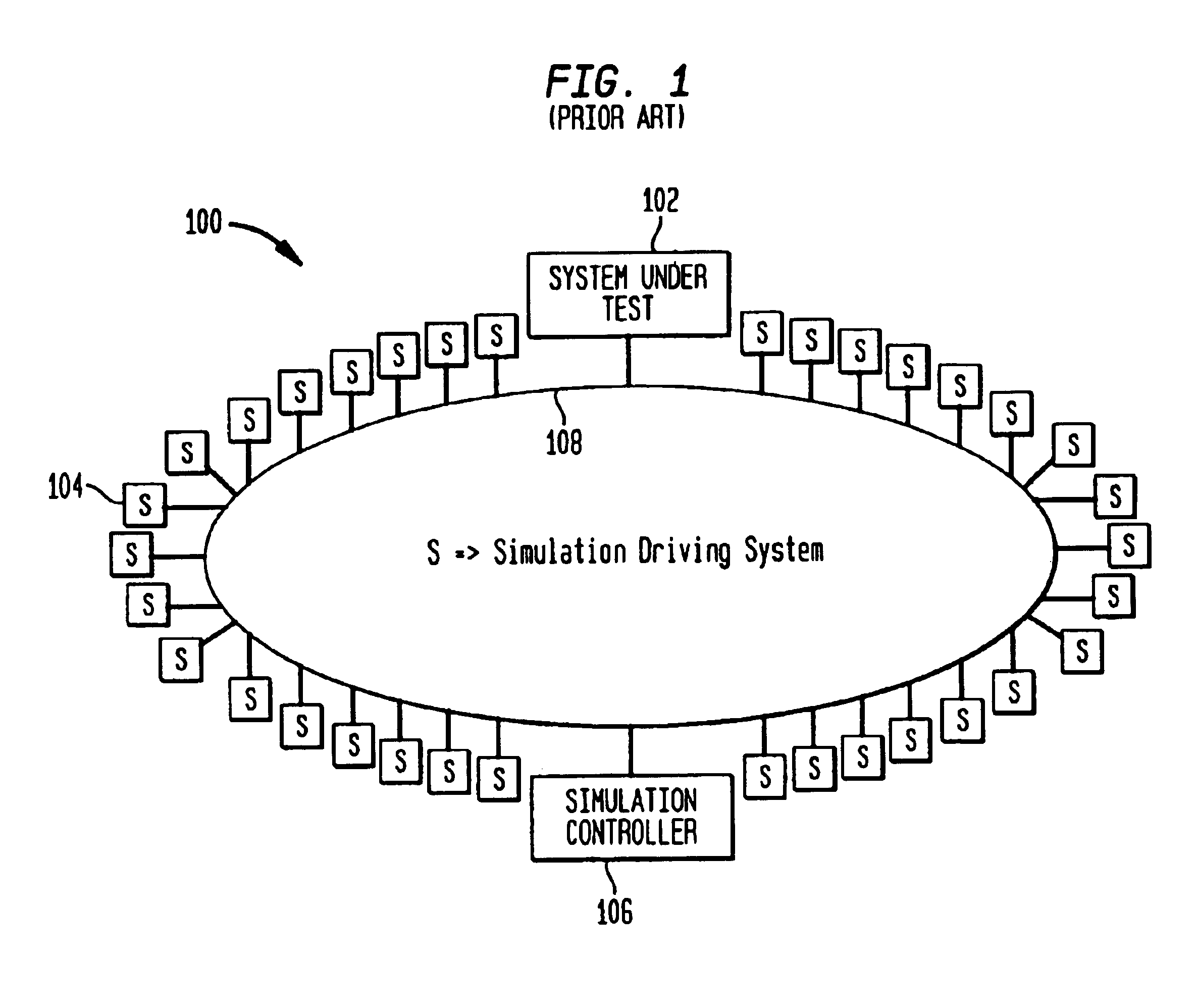Intelligent workstation simulation-client virtualization
a workstation and intelligent technology, applied in the field of intelligent workstation simulation, can solve problems such as system failure, large server size, and failure to exercise many client-specific paths in the system under tes
- Summary
- Abstract
- Description
- Claims
- Application Information
AI Technical Summary
Benefits of technology
Problems solved by technology
Method used
Image
Examples
Embodiment Construction
[0052]The present invention is directed to one component of a generalized client / server network simulation tool that simulates network traffic that is indistinguishable from the traffic generated by a plurality of real clients. The simulation tool may be employed to test host, for example, S / 390, based network serving software and hardware. However, because of the generalized nature of the simulation, the scope of this tool is not limited to host testing nor to software testing. Moreover, the simulation tool of the present invention may be utilized to test the network fabric, i.e., the physical layer of the protocol stack.
[0053]To accomplish the foregoing high level of simulation fidelity, that is, a simulation closely resembling real client network paths, the network simulation tool includes: 1) simulation at level 2 in the protocol stack; 2) simulation that builds complete LAN frames; and 3) a component that enables insertion and retrieval of traffic for multiple clients. Each of ...
PUM
 Login to View More
Login to View More Abstract
Description
Claims
Application Information
 Login to View More
Login to View More - R&D
- Intellectual Property
- Life Sciences
- Materials
- Tech Scout
- Unparalleled Data Quality
- Higher Quality Content
- 60% Fewer Hallucinations
Browse by: Latest US Patents, China's latest patents, Technical Efficacy Thesaurus, Application Domain, Technology Topic, Popular Technical Reports.
© 2025 PatSnap. All rights reserved.Legal|Privacy policy|Modern Slavery Act Transparency Statement|Sitemap|About US| Contact US: help@patsnap.com



